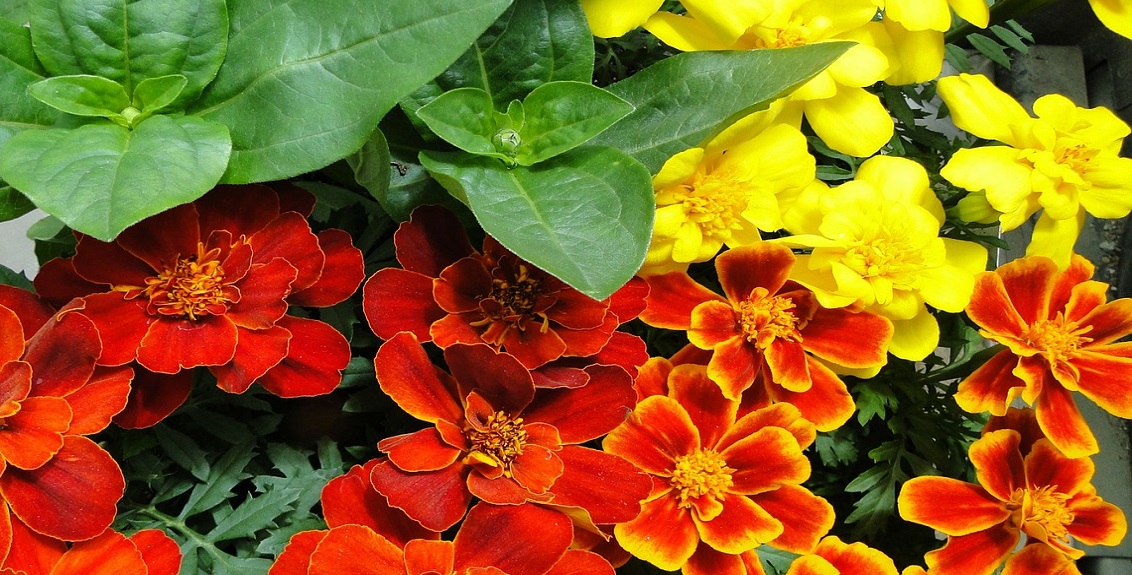Hardening off is a vital step needed to prevent your plants dying or wilting from sudden changes in conditions. Without this vital step it is all too easy to lose precious plants or have them wilt from the sudden change in conditions between a warm windowsill or greenhouse and a draughty garden. Seedlings need to be gradually introduced to the outdoors in stages over a period of at least a week and preferably two. This generally involves taking them outside for just a couple of hours each day at first and then gradually lengthening that time until they are ready to spend a whole day and eventually nights out.
This time is required for them to adjust due to the:
- Greater range of temperatures outside
- Chill factor, moisture loss and buffeting of moving air
- Greater variation in water supply which increases evaporation from plants outside
- Direct strong sunlight which can scorch young tender leaves
This video shows you how to harden off plants and how to protect plants from pigeons, wind, rabbits, birds, slugs, cabbage root fly, carrot fly, cats and dogs and the cold.
Seedlings need to be gradually introduced to the outdoors in stages over a period of at least a week and preferably two. Hardening off usually takes two to three weeks, but the warmer the initial growing conditions, the longer the hardening off period. Hardy plants acclimatise faster than half-hardy or tender kinds.
To be on the safe side, do not plant out tender plants before the date of the last frost which is usually late spring in the south of England, later in the north and Scotland.
Hardening off simply means getting your seedlings used to outside conditions gradually. Give them a little more exposure to wind, sun, and temperature variations each day, until they are ready to be planted out.
What To Do:
- Plants raised in heated glasshouses and on windowsills should go first into a cold glasshouse if available. When moving plants out of propagator it is best to do so on an overcast dull day as this will help reduce wilting. After two weeks in these cooler conditions, plants should be moved into a well-ventilated cold frame.
- If you don’t have a greenhouse, move plants into a cold frame, with the lid open slightly during the days of the first week and closed at night. Gradually raise the lid during the next fortnight until removing it entirely prior to planting. A cloche may be used but this does not give as much frost protection as a coldframe.
- Cold frames have the advantage that they can be opened up more and more over a few days, providing a further element of control. A cold frame is a simple box with a glass or plastic door that opens and closes. Set your seedlings into it and open the door a little farther each day, closing it each night. If the weather is sunny, shade the glass for the first few days.
- If you don’t have a green house or cold frame, place plants in a sheltered position in front of a south-facing wall or hedge and cover with two layers of fleece to prevent sun scorch and temperature shock. For the first week, leave outside during the day, but bring in at night. In the second week reduce to one layer of fleece. Towards the end of the fortnight remove the fleece during the day.
If the weather is suitable leave the plants outside at night but ensure they are covered. Towards the end of the third week leave them uncovered before planting out.
After hardening off you’ll notice a difference in your seedlings. The stalks and stems of your plants will thicken, and they’ll look healthier and sturdier.

Useful tips:
- Watch the weather closely – the best time to harden plants off is on wet or overcast days under cover of a greenhouse or cold frame. Overcast days don’t stress the plants with high afternoon temperatures and are unlikely to produce hard frosts at night.
- Once hardened off and planted out, still watch the weather – even if a late frost is forecast, plants can be covered with fleece or bubble-wrap and still survive
- When taking plants outside, don’t place them on the ground where slugs can access them or birds can knock them over looking for grubs.
- At first, limit the amount of direct sunlight they receive – choose a place which is shaded in the afternoon.
- Keep a few plants inside as an insurance policy, just in case an unexpected frost kills the main batch off.
